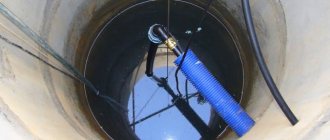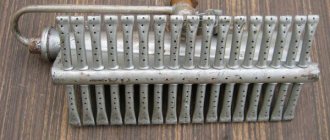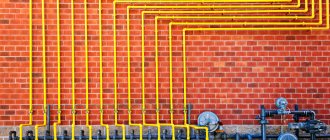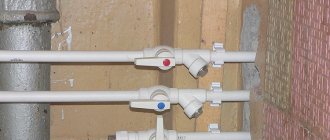Good question, thanks. There are many misconceptions on the Internet on this topic, it will be useful to figure it out.
"What SNiP are we guided by in 2015"? Oddly enough, none, if we are talking about the Russian Federation. In the good old SNiP 2.04.08-87, which was in effect in various editions until 2002, the following was written in the section "Gas supply of residential buildings":
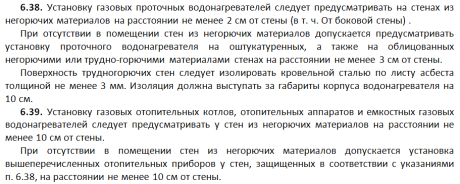
We see that the distance between the wall-mounted gas boiler and the wall is 10 cm, provided that it is made of non-combustible materials. However, SNiP '87 has lost its force and today JV 62.13330.2011 is in effect instead. The new rules do not even mention the distance between the boiler and the wall. There is logic in this, because modern gas heat generators are very different from those that were produced a quarter of a century ago. The body of boilers with a closed combustion chamber heats up significantly less. The only document that today you can definitely rely on is instructions for the installation and operation of a gas boiler. And for each boiler model, the manufacturer indicates individual data, for example:
Everything is clear - we strictly follow the instructions. But occasionally there are wall-mounted gas boilers, in the manuals to which there is generally no indication of the minimum required distance to the wall. In this case, for boilers with a closed combustion chamber, we advise you to focus on the position of the joint venture on the need to ensure convenient maintenance of the heating unit. Ensure free dismantling of the boiler casing. You will have to study the boiler design. On some models, to remove the cover, you need to unscrew a few screws from the side. This means that enough space should be left to the wall to accommodate a screwdriver, about 15 cm. We recommend that boilers for which no distance is indicated should be hung no closer than 10 cm from the wall, even if this is not necessary for maintenance. It will be easier to arrange commissioning, the inspector will not have any questions.
However, it should be borne in mind that individual regions have the right to adopt their own regulations (instructions), partially replacing federal norms. We do not know that today regional norms limit the distance from the boiler to the building structures, but we still recommend that you consult the local branch of the MinGAZ just in case.
teploguru.ru
According to SNiP 42-101-2003 6.22 Distances from building structures of premises to household gas stoves and heating gas-using equipment should be provided in accordance with passports or installation instructions of manufacturers. 6.23 In the absence of requirements in the passports or instructions of the manufacturers, gas-using equipment is installed based on the convenience of installation, operation and repair, while it is recommended to provide for the installation of: a gas stove: - near a wall made of fireproof materials at a distance of at least 6 cm from the wall (including side wall). It is allowed to install the slab near walls made of non-combustible and combustible materials, insulated with non-combustible materials (roofing steel on an asbestos sheet with a thickness of at least 3 mm, plaster, etc.), at a distance of at least 7 cm from the walls. Wall insulation is provided from the floor and must protrude beyond the dimensions of the slab by 10 cm on each side and at least 80 cm from above; wall-mounted gas-using equipment for heating and hot water supply: ... (And hereinafter in the text) G.12 The connection of gas-using equipment to the channels should be provided with connecting pipes made of roofing or galvanized steel with a thickness of at least 1.0 mm, flexible metal corrugated pipes or unified elements supplied with the equipment.
the mmar length of the horizontal sections of the connecting pipe in new buildings should be taken no more than 3 m, in existing buildings - no more than 6 m. The slope of the connecting pipe should be taken at least 0.01 towards the gas equipment. On connecting pipes, it is allowed to provide no more than three turns with a radius of curvature not less than the diameter of the pipe. Below the place where the connecting pipe is connected to the channels, a “pocket” device with a cleaning hatch must be provided, to which free access must be ensured. If necessary, connecting pipes laid through unheated rooms should be thermally insulated. D. 13 It is not allowed to lay connecting pipes from gas-using equipment through living rooms. D. 14 The distance from the connecting pipe to the ceiling or wall from non-combustible materials should be taken at least 5 cm, and from combustible and hardly combustible materials - at least 25 cm. It is allowed to reduce the distance from 25 to 10 cm, provided that combustible and hardly combustible structures are protected by roofing steel on an asbestos sheet with a thickness of at least 3 mm. The thermal insulation should protrude 15 cm beyond the dimensions of the connecting pipe on each side. __
The passports for the stove and the column have their own requirements (screenshots below), each gas equipment has its own. But if you believe the requirements for installing the stove (from the screen for hefest), then you can see the lateral distance from the stove to the column at a height of more than 500 mm and 50 mm to the side or directly above the stove, but at a height of at least 850 mm In the passport of the gas water heater, there is also a requirement for its installation (screen 2) If the requirements are FULFILLED, THEN NORMAL.
otvet.mail.ru
Hello Oksana! I am afraid that the same confusion reigns with the norms for the location of gas equipment and gas appliances in the Ukrainian documents as in the Russian ones. So, it can be assumed that if these norms were properly spelled out somewhere, then for sure they would be the same as in the Russian norms. A question similar to yours is being asked by many of those who are going to install gas equipment at home in accordance with all the rules and regulations. But at the same time, they do not want to be guided only by the old SNiPs and the convenience of installation for workers in exchange for the comfortable existence of the owners themselves in their own home. Many installers of equipment refer to the old standards, but even in them nowhere, as far as I understand, the distances between the gas boiler and the gas stove are not specifically spelled out.
They contain only indications that the clear distance between the stove and the DHW column should be at least 10 cm.There are instructions for the distance between the meter and the boiler, the installation distances from the wall to the stove (0.07 m) and to the meter (0 , 02 m). The distance to the opposite wall is 1 m. But what documents determine the distance between the column and the boiler, between the boiler and the boiler, between the stove and the boiler is completely unclear. SNiP 2003 states that unless otherwise specified, the distance is determined by the equipment documentation. However, the trouble is that the documentation for the equipment, as a rule, does not indicate these very distances. The same applies to gas supply projects for an individual house. That is, they also do not indicate the installation dimensions, but only indicate the installation location. This means that the distance between all these devices should be determined, guided by common sense and ease of use.
Articles 6.23 and 6.24. SNiP 2003 states:
6.23 In the absence of requirements in the passports or instructions of the manufacturers, gas-using equipment is installed based on the convenience of installation, operation and repair, while it is recommended to provide for the installation of:
gas stove:
- near a wall made of non-combustible materials at a distance of at least 6 cm from the wall (including the side wall). It is allowed to install the slab near walls made of non-combustible and combustible materials, insulated with non-combustible materials (roofing steel on an asbestos sheet with a thickness of at least 3 mm, plaster, etc.), at a distance of at least 7 cm from the walls. Wall insulation is provided from the floor and must protrude beyond the dimensions of the slab by 10 cm on each side and at least 80 cm from above;
wall-mounted gas-using equipment for heating and hot water supply:
- on walls made of non-combustible materials at a distance of at least 2 cm from the wall (including from the side wall);
- on walls made of non-combustible and combustible materials, insulated with non-combustible materials (roofing steel on an asbestos sheet with a thickness of at least 3 mm, plaster, etc.), at a distance of at least 3 cm from the wall (including from the side wall).
The insulation should protrude 10 cm and 70 cm from the top of the equipment case. The horizontal distance in the light from the protruding parts of this equipment to the household stove should be taken at least 10 cm.
Equipment for apartment heating should be provided at a distance of at least 10 cm from a wall made of non-combustible materials and from walls made of non-combustible and combustible materials.
It is allowed to install this equipment near walls made of non-combustible and combustible materials without protection at a distance of more than 25 cm from the walls.
When installing the above equipment on a floor with a wooden covering, the latter should be insulated with non-combustible materials, ensuring the fire resistance of the structure is at least 0.75 hours. The floor insulation should protrude 10 cm beyond the dimensions of the equipment case.
6.24 The distance from the protruding parts of gas-using equipment in the places of passage should be at least 1.0 m in the clear.
If a gas water heater is not provided
In a house where the installation of gas equipment, such as a stove, is allowed, the installation of a column may be prohibited. This limitation applies to houses with more than 11 floors. No regulatory authority will issue permission for the installation of a column in such an apartment, as it is dangerous for the residents.
In addition to the number of storeys, redevelopment may become a reason for refusal. Studio apartments are not suitable for the installation of gas equipment, since the appliances must be installed in non-residential areas.
If the kitchen is combined with the living room, then this makes the use of gas appliances illegal. Consider these limitations before redeveloping. The same can be attributed to apartments where the kitchen is absent or shared.
If the house does not fall under these restrictions, then it is necessary to collect a package of documents for registering the device. The procedure is as follows:
- Write a statement to the gas distribution company.
- Get a plan from BTI or Rosreestr.
- Provide an extract from Rosreestr confirming ownership.
- Contact a specialized organization to draw up a project.
- Find certified specialists from an organization that has permission to work on gas.
After that, the specialists will make an insert into the gas pipe, connect the device and put the water heater into operation.
It is highly not recommended to do the installation of a gas water heater with your own hands, bypassing the legal order. These actions not only lead to penalties, but also endanger the lives of people.
When you can't put a flexible gas line
IMPORTANT! If you need to move the slab a long distance, then you cannot use a flexible hose. As a rule, the greatest length that is possible in a particular case is indicated in the passport of each gas appliance. For some, it cannot exceed 2 m, for others, this size can be even larger.
But at the same time, you also need to ensure that the hose does not bend unnecessarily. If the stove cannot be installed otherwise, then the gas pipe must be transferred. In other words, it will have to be increased. Such a pipe should be welded so that there are as few joints as possible through which gas can leak. And this is where the difficulties begin.
Gas is not only a flammable substance, but also an explosive one. Therefore, the specialist will never weld directly to the squeegee pipe. Even if he closes the valve and cuts off the flow to the apartment, this does not guarantee that local overheating of the blue fuel will not occur in the drive during welding. Therefore, the pipe is initially measured, a sketch of the drawing is drawn up, according to which the part will be welded, which will then be screwed to the squeeze. This part, no matter how complex the configuration it may be, will be made either in the workshop of a residential office, or in any safe place. For example, in the stairwell. Now all that remains is to connect it with a coupling.
Branched gas pipe for two gas appliances.
A more difficult case is when a tenant wants to spread the oven and hob to different places in the kitchen. Then you will need to branch the gas network inside the apartment. And in this case, too, it is better to use a welded structure. It is only desirable that each device has its own valve in order to block the access of gas.
If the column has already been installed
When changing the water heater in the event of a malfunction, the passport of the device must also be replaced. If you independently mount the gas water heater, then in the passport of the new device there will be no marks about commissioning and inspections.
After receiving the comment, it will be necessary to connect the column again, inviting certified specialists.
Their duties include inspection of ventilation ducts. In older homes, they can be clogged with rubbish. It is dangerous to operate clogged ventilation ducts. This can cause fatal carbon monoxide poisoning. If the decision to independently install the water heater is made, then first of all, you need to check the ventilation.
Gas meter replacement procedure
Upon completion of the installation of the pipe of the MKD water riser, an "Act of work performed" is compiled, in which the following will be spelled out:
- the date of the contract;
- serial number of the contract, according to which the act is issued;
- the amount of work performed and all the actions taken;
- cost of work;
- the name of the person performing the repair work;
- the signatures of the contractor and the customer.
This document is made in 2 copies, one of which is given to the contractor, and the second remains with the customer. The contractor is the organization dealing with the replacement of the emergency element. The customer can be the Criminal Code (then one copy remains with them and the owner of the apartment is not handed over) or directly the owner of the property.
Even if the contract is drawn up by a representative of the Criminal Code and a repair company, the owner of the apartment should make a copy of this act.
Until recently, connecting gas to a private house was a very expensive and painstaking business. Due to the fact that there were no clear prices, and this area was monopolized, the cost of services was set by the local government, and sometimes it reached 0.5 million rubles. After the change in the laws on gasification, the installation time began to be about 1-1.5 years, and the price for individuals was 20-50 thousand rubles.
If the central gas main is more than 200 m away from you, the connection will be difficult.If you want to conduct gas for yourself alone, then it is pointless, since the cost of this project can be several million. The only way out is to cooperate with other residents of your locality and write an application.
Any measuring equipment has an operational period. The replacement of the gas meter must be carried out according to the established rules. Otherwise, his testimony will be considered invalid, and the person will have to pay according to the accepted average rates, and this is quite expensive. Next, we will tell you about all the legal nuances.
In other words, the property owner is obliged to ensure that the meter is in good working order. If necessary, he must, at his own expense, carry out verification and subsequent replacement of the device. This is stated in article 158 of the LC RF
How much does it cost to replace a gas meter? The price for such a procedure will consist of several components:
- Write an application to the gas service for a permit.
- Get a list of specifications. If it turns out that only the equipment is changing, then the project remains the same. If the place of installation, the scheme of supplying communications changes, then a new project is being developed. To do this, you need to contact a company with a license.
- Take the building passport from the replacement company. With him, an act on the state of the chimney ducts, an act on the conformity of equipment with standards, contact the gas inspection.
- Dismantling, installation, commissioning.
- Installation is allowed only in non-residential premises with a door.
- For the installation of equipment with an open combustion chamber, it is necessary to have a window with a vent and a room area of 8 m2 or more. For closed devices, the requirements are only in terms of volume - from 9 m².
- Gas boilers can only be located in the basement or basement floor, with the possibility of placing no more than two boilers or storage water heaters.
- It is permissible to install double-glazed windows in the room for placing boilers, provided that design features are used that allow them to be easily knocked out.
- It is imperative to equip a residential building with pressure and temperature control devices in the gas system and gas meters.
- Gas equipment must be manufactured at an enterprise that has a special certificate that allows it to be produced, with supporting documents attached to the equipment.
- The hoses for connecting gas equipment must be airtight, made of a material that allows it to be fed into the house safely and no more than 1.5 meters in length.
- The location of the slab should be such that at least 1 meter remains to the opposite wall.
- The stove must be equipped with a gas control system "Gas-control" and between the tap and the hose must be installed a dielectric coupling from the stray current, as well as comply with GOST 33998.
- If the gas stove is installed under a canopy, then wind protection is required for the burners.
- The requirements for the kitchen are as follows:
- ceiling height not less than 2.2 meters;
- volume: at least 8 cubic meters for a 2-burner stove, at least 12 cubic meters for a 3-burner and at least 15 cubic meters for a 4-burner;
- it is necessary to have a window that allows ventilation of the room, an exhaust ventilation duct and a gap under the door.
Note that in the Leningrad region, for example, the authorities decided to allocate a regional benefit for gasification of private houses in the amount of 110 thousand rubles in the categories listed above. The rest of the population - 70 thousand rubles.
- In the territorial management company, you must provide documents and write a statement.
- It is necessary to order project documentation from the gas supplying organization.
- Experts evaluate the technical characteristics and the connection of gas networks to an apartment or a private house.
- The subscriber must independently purchase a gas meter of a certain brand after consulting a specialized company, as well as pay for the design of its installation.
- The owner of the equipment must pay for the dismantling of the old appliance.
- After replacing and checking the gas meter, an act of completion should be signed.
- Sealing.
Read more: Self-regulating heating cable heating type for pipes
According to the legislation of the Russian Federation, Art. No. 4871-1 of 1993 "On ensuring the uniformity of measurements", gas consumption measuring devices should be delivered on time for verification. This is the responsibility of the owner of the equipment.
Requirements for a room with gas equipment
The place where the gas water heater will be installed must have a cubic capacity of more than 7.5 m3. The height in the room should not be lower than 2.0 meters. This height, according to the standards, is sufficient for a gas water heater. The room must be glazed.
The window cannot be deaf, it must be possible to ventilate in the event of a leak. The total glazing area (without a frame) is determined by the formula:
C = O * 0.03
Where:
C - glazing area. О is the volume of air in the room.
The window must allow air to pass through for emergency ventilation. An ordinary kitchen fully meets these requirements, if it is equipped with a door. If there is no door in the kitchen, then it must be installed.
Installation of a gas analyzer in the room is desirable. It will help detect gas leaks. This device is optional, but helps to monitor the operation of gas appliances. It reacts to an excess of propane in the air, and then warns about this with a signal.
Replacement rates
First, it is worth finding out under what circumstances the gas pipes are used in the kitchen. The use of blue fuel in such a room most often means the installation of a stove. It's time to familiarize yourself with the terms of use. So, remember the main postulates:
- gas stoves are allowed to be installed in kitchens with a height of 2.2 meters (if the ceiling in the room is sloping, then to install the stove, you should choose a place where it reaches the established norm);
- the kitchen should be equipped with a window with a vent, so that during the day you can carry out repair work without artificial lighting, airing the room (the presence of a functioning ventilation duct is welcomed);
- between the slab and the opposite wall, there must certainly be a passage with a width of 1 meter;
- the ceiling and walls made of materials prone to burning, according to the standards, must certainly be covered with plaster;
- the stove is allowed to be used in kitchens, separated from the corridor by a reliable wall / partition and door;
- the distribution of gas pipes in the kitchen should be made so that the distance between the walls and the stove is from 7 centimeters;
- branching to the plate is allowed only at the level of the connecting pipe;
- the shut-off valve should be installed at a level of 1.5 meters from the floor and at a distance of 20 centimeters from the side of the stove;
- for mounting the plate, it is permissible to use a special (heat-resistant - from 120 degrees) flexible sleeve and do not forget to change it, based on the recommendations specified in the product passport.
Read more: We change the toilet bowl in the apartment with our own hands. How to replace the toilet: step-by-step instructions on how to replace the toilet with your own hands We change the toilet with your own hands
The norms of handling are indicated mainly with already installed pipes and devices connected to them. If you plan to change, transfer, or even cut the gas pipe in the kitchen, then go ahead.
This is how you can hide a fragment of the network if it bothers you - without any transfer
According to the norms for replacing risers in an apartment building, their replacement must be carried out in two cases:
- The end of the service life of the metal structure.
- Complete renovation of the bathroom of the apartment.
Living conditions provide for 2 modes of pipe replacement:
- planned - when the replacement date has come;
- emergency - when there was a violation of the integrity of the pipe and a leak was formed.
IMPORTANT
The warranty period for pipes in apartment buildings is at least 25 years. Even if after this period the structure is complete without leaks, the riser still needs to be replaced.
Increasingly, cast iron pipes are being replaced with polypropylene ones. This is due to a number of advantages of the material:
- profitability;
- ease;
- strength;
- safety for the environment;
- resistance to deformation from thermal effects;
- resistance to corrosion and other influences;
- sliding structure of the inner walls, which prevents the formation of plaque;
- long service life: from 50 to 100 years.
Ventilation and chimney requirements
A ventilation hole is required to create air circulation in the room. It should not be clogged, air should pass through it calmly. If you neglect this rule, then in the event of a gas leak, apartment residents will be poisoned with serious consequences.
The risk of detonation of household gas will increase significantly if it is not removed naturally, since a leak can occur at night when a person is not able to detect it.
For the normal functioning of the gas water heater, an additional chimney must be installed. It can be brought out to the general building system or directly to the street. When constructing a chimney, it is necessary to take into account that it cannot have more than two bends at an angle of 90 degrees. The total length of the chimney must not exceed three meters. Three options for the location of the chimney are allowed.
The pipe must have a vertical section at the point of connection to the water heater. The length of the vertical section must be greater than or equal to 50 cm. The length of the horizontal section of the pipe must not exceed two meters. It is allowed to make a chimney from a flexible corrugated pipe, but it is necessary to exclude its sagging, which can block the removal of combustion products.
If the column device does not imply a chimney, then you cannot limit yourself to the ventilation hole in the wall. It is necessary to install a full-fledged hood, but even in this case, the gas service will have questions about such a carbon monoxide removal system.
Carrying out works
Is it possible to transfer a gas pipe in the kitchen with your own hands? As you understand, according to the law, no, but only you can decide whether to obey the rules. If you want to take a chance, study the detailed description of the work. However, it will be useful for you to familiarize yourself with such a manual, if only in order to control the work of the wizards.
Tools and materials
To carry out the work you will need:
- new pipe;
- flexible hose;
- crane;
- brackets / clamps;
- tow / sealant;
- welding machine;
- drill;
- grinder / hacksaw;
- keys;
- blowing device;
- brush;
- soap;
- paint;
- gloves;
- welding mask;
- sandpaper.
This is important to know! Under no circumstances check if there is a blue fuel leak with a lighted match or a lighter, bringing the flame to the joints, otherwise you risk blowing up the entire staircase.
One of the most reliable crane models
Process description
- Stopping the supply of blue fuel. You simply need to close the tap through which the gas enters the house.
- Purging the system. This action is required. First, you remove the remaining gas from the network. Secondly, clean the pipes from debris, thereby improving the quality of the blue fuel supply.
- Cutting the pipe. At this stage, you need to remove the fragment of the structure that is stopping you. Just cut it off.
- Welding the hole that appears after removing the pipe.
- Drilling a hole in the place where you plan to insert a new fragment of the structure.You will need a drill for this process.
- Welding is a branch of an existing system with a new one.
- Installation of the valve on the opposite side of the pipe. Do not forget that the connection must be airtight (use a special tape, tow or a ready-made sealant).
- Fixation of a new fragment of the structure, for which the pipe is attached to the wall using clamps / brackets.
- Connection to the tap of a flexible hose (for connecting a stove, column or other devices).
- Checking the quality of the work performed. Prepare a soapy solution and apply it with a brush to the pipe surface and joints. If a leak exists, bubbles will appear.
Does the master check the tightness? Stay nearby, watch for bubbles
If the entire block of work is done by a team that came from the relevant service, you will only have to follow the conscientiousness of the masters and complete step 10 in order to be completely sure that everything is done properly. When the workers leave the house, and the pipes are dry, do not forget to paint them in order to avoid the corrosion process and make the structure more beautiful.
It is worth paying attention! When buying flexible hoses, pay attention to the length. If you buy a product that is too long, you will no longer be able to shorten it, because according to the technology it is forbidden to cut such hoses.
Do not forget to get a new passport of the premises in which the changes have been made.
All is ready!
Agree, moving the gas pipe in the kitchen is not such a difficult task if you know how to approach the process.
Chimney device in an apartment with wooden walls
In wooden houses, the use of a water heater on blue fuel is allowed, but the fire safety standards for installing a gas boiler must be observed. The chimney cannot come into contact with wood; non-combustible material must be placed between them. Basalt or mineral wool can be used as thermal insulation. The use of heat-resistant polyurethane foam is allowed.
This is necessary to prevent fire in case of strong heating of the chimney. As a rule, chimneys are not provided in old wooden houses, or they are designed for stove heating. Installation of gas equipment is prohibited in emergency houses.
Column layout rules
The water heater cannot be located on the load-bearing wall of the building. This is expressly prohibited by the requirements for the installation of gas water heaters. In the event of an explosion, this could result in damage to the building or its partial destruction. To clarify the possibility of installing the device, you need to take information from the cadastral passport of the apartment and the general plan of the house. This information can be clarified by calling specialists.
Space requirements are imposed from the column itself to the opposite wall. The distance should not be less than one meter. This is necessary for free access to the device for maintenance and inspection. Also, you cannot install pipes for supplying gas to walls.
This makes it difficult to inspect communications and find gas leaks in the apartment. If this violation is detected, an order will be issued to eliminate it and information will be explained on how to correctly install the gas water heater and where to go.
The column must be at a distance of more than 10 cm from the wall. It is not allowed to install a gas water heater on a wooden wall without preliminary preparation. At the installation site, a steel plate should be installed, equal or larger in area to the rear wall of the device.
Installation of a column above a gas stove is not allowed. These devices must be at least 1 meter apart. Also, you can not use the hood for a gas stove as a removal of combustion products. You cannot use one chimney for an exhaust hood and a gas water heater. This is expressly prohibited by safety regulations.
How is the replacement work carried out
When repairs are required, you call a specialist in these matters.The foreman, having reached the place of work and drawing up a contract, first of all makes sure that there are no strangers at the place of work, smokers leave the house so as not to accidentally cause an explosion. According to safety precautions, the foreman hangs out a special sign at the place of work, informing about the nature of the work being carried out. Accordingly, the electrician will not be able to work simultaneously with the gas master - one spark at an inopportune moment and an explosion.
Before trimming, the fitter cuts off the feed. The crane shuts off the flow as a whole, not only to the place prepared for work. Please note in advance that it is strictly forbidden to engage in self-purging into the rooms of the apartment. After thinking about safety precautions, the pipeline begins.
Gas pipeline section replacement tool
For work, you will need such a tool:
- Grinder for cutting out old elements and cutting new segments;
- Cutting and grinding wheels;
- Perforator for attaching pipe brackets to walls;
- Gas and wrenches, screwdrivers;
- Sealant.
Having assembled the necessary tool, the installation of gas pipes in the apartment will be quick and hassle-free.
The old gas pipeline in the apartment looks ugly
Specificity of gas supply installation
The pipes in the apartment are the property of its owner, but unauthorized changes in the gas supply system cannot be made. For any changes, you must obtain permission from the gas service, otherwise a fine will be issued.
If the gas water heater has already been installed in this place, then this will not cause significant changes to the project. It is enough to turn off the gas valve on the pipe and replace it. If the water heater is installed for the first time, then you will need to do the wiring.
When self-installing pipes, the following rules must be observed:
- Shut off the gas before starting work.
- Carry out work with an open window.
- Remove debris from pipes that have arisen during installation.
- Do not run pipes through door and window openings.
- Do not use a ventilation shaft for piping.
- Do not install the gas line in the wall.
- Do not use flexible hoses longer than 3 meters.
- Paint metal pipes.
Particular attention should be paid to the sealing of the gas pipeline connecting elements. To do this, you need to use a sealant and sealant. After completing the wiring, you can start installing the device.
The procedure for changing the location of the gas system in the house
Action briefing to help relocate the gas system
Moving the gas pipe for a specialist is a simple job and is performed in this order:
1. The gas valve must shut off the gas supply to the living quarters;
2. Purge the gas pipeline in order to remove the residual gaseous substance from its cavity;
3. In the connecting section where the connection with the gas pipeline takes place, you need to cut off pipes that are not useful and weld the hole that remains of them;
4. In the places where it is planned to insert the gas pipe, it is necessary to drill a hole and weld a branch device made of metal products to the gas pipeline;
5. Mount the valve to the diverter mechanism and perform a diversion to the gas stove and, if necessary, to other household items using a threaded connection;
It must be remembered that household appliances are connected to the gas outlet device using a flexible silicone tube, the length of which should not be more than 2 meters. Such a tube can ensure that the transfer of the gas system may not be necessary.
6. Before all appliances are connected, the gas valve that has been re-installed and the new gas system with existing welds must be checked for leaks.
The processes associated with the gas system require a special permit, which is held by specialists who are tested every year to confirm their qualifications, skills and knowledge.
how to transfer a gas pipe in a private house with your own hands
What is the way out of the situation if there is a need to move the gas line?
Initially, before all events, you need to apply to the gas organization. You need to contact the organization of the district where the applicant lives. Indicate on the paper that it became necessary to relocate the gas system.
A gas worker, a gas service specialist, will come to the address indicated in the application, inspect the room where the gas pipes are located and announce a verdict on the possibilities of transferring the gas system, or is it simply impossible. In case of a positive decision, he will make the necessary settlement operations and write an estimate. There are times when it is necessary to draw up a new technical plan for an apartment, taking into account the planned transfer of the gas system. After the payment for the arrival of a specialist and his work is made in the cash offices of the gas service enterprise, the date of the arrival of the brigade to carry out the work will be determined.
It is important to know that, being in the gas service, you need to ask them if they have a certificate for carrying out work on the transfer of the gas system. Such a document should be provided for review without hindrance, without wasting time.
After a team of professional workers comes, you need to make sure of their professional qualities, you can ask them for an identity document, which should indicate their qualifications and the date of the last testing. Only after checking such information, allow the brigade to transfer the gas system. After the work is completed, gas workers must provide an act of work done and enter such information in the gas documents of the apartment.
how to move a gas pipe in the kitchen with your own hands
Standards stipulated by building codes for the location of gas lines in an apartment
The gap of the gas pipeline, which is laid in the floor covering or is in an open position in the apartment to various buildings for construction purposes or other pipeline structures (pipes for sewerage or water supply products, heating system) and technological devices should be such as to ensure an easily accessible inspection, repair and the installation of a gas pipeline structure and those fittings that will be installed additionally. In such a situation, the gas pipeline should not intersect with ventilation grilles, door and window openings.
how to move a gas pipe to another room
A certain gap must be maintained between the gas pipeline running in the partition and the communication devices, which are calculated in accordance with all the requirements of technological rules. Such documents are provided for work with broadcast cables and communication facilities.
Between the gas pipeline and the power supply communication, which runs inside the apartment, the smallest gap between the possibility of contact is calculated in accordance with all standards.
It is possible to lay a gas pipeline structure in a dwelling at the height provided for this, which is 2.3 meters from the floor covering to the bottom of the gas pipe, in the presence of heaters for the product (heat-insulating coating) to the bottom of the heaters.
Fixation for gas pipeline structures that are laid open and attached to partitions, various ceilings and decorative objects in the room should be done using a bracket, hooks, clamping elements and suspension devices.The gap between the fasteners of the gas pipeline structure must be selected in strict accordance with the requirements of building codes and regulations.
It is necessary to lay a gas pipeline that moves gas in a wet state, taking into account a mandatory slope of at least 3%. It should be borne in mind that in the case of calculating devices, the slope is determined from such a device.
A vertical gas pipeline structure in the area where it intersects with a building structure must be installed in a box. All existing gaps between the gas line and the gas line are filled with resin-impregnated tow, rubber grommets or other elastic material can be used.
The ends of the box must have a protrusion from the floor covering at least 4 cm. And the diameter of the duct must be determined in such a way that a gap of at least 6 mm is formed between the duct and the gas pipeline structure, taking into account the diametrical parameter of the pipe up to 33 mm, not less than 11 mm in the case of a larger diameter of the gas pipeline.
Gas systems inside a building, even those laid in a duct, involve a painting process. It is necessary to paint using water-resistant varnishes and paints.
Gas equipment must be connected to the gas pipeline using rigid connectors. It is also worth remembering that there are risks of negative consequences in any work with a gas pipeline, so if you want to transfer the gas system in a residential area only because of decorative wishes, you should refuse such an undertaking. If, nevertheless, a decision is made to transfer, the installation process must be performed when none of the relatives are at home.
The question of whether it is possible to carry a gas pipe in an apartment is considered controversial. But it depends on what is meant by a gas pipe. What does it usually consist of? It:
- the actual riser pipe running along all floors;
- squeegee going to the plate;
- squeegee to the gas column (if installed);
- connection to AOGV (if the house does not have centralized heating);
- flexible liners that go directly to the devices.
Usually big problems arise when you want to move a riser pipe. But work with squeegees is possible, but at the same time it must be carried out by qualified gas workers. On the one hand, the tenant himself can screw a flexible eyeliner to the finished squeegee pipe, but you need to know the subtleties. For example, a specialist will definitely lay a linen or synthetic gasket into a threaded joint, just like plumbers do when they connect pipes. The gasket in the threaded connection is a guarantee of no gas leaks.
On the other hand, a specialist will do such work better and faster, besides, he will give an official guarantee for the eyeliner, and if something happens to it, then you will have somewhere to turn for a free replacement.
Capacity table for gas pipes:
Checking the tightness of the gas channels
After installing the water heater, it is necessary to check the gas pipes for leaks. If there is a gas analyzer, this greatly simplifies the procedure and improves the quality of the test. If this device is absent, then you can use the old method.
To do this, you need regular soap, a jar and a brush. Soap dissolves in the jar to form a liquid emulsion. Then, using a brush, the emulsion is sequentially applied to the pipe joints. As you apply, you need to monitor the appearance of bubbles on the treated areas. If they appear, the leak must be repaired.
Under no circumstances should a gas leak be checked with a fire. This is dangerous and could cause an explosion. You shouldn't risk your life and the lives of your neighbors.
Why keep distance
The kitchen is the most loaded area with electrical appliances.Refrigerator, microwave oven, exhaust system, dishwasher - this is a small fraction of household appliances, without which it is impossible to imagine. Therefore, safety in this part of the apartment should come first. Electricity, gas and water supply are useful inventions, but in the hands of a hack or an irresponsible person, they cause fires, injuries, accidents. To avoid such troubles when developing a kitchen design, you need to carefully consider all the details of the interior, as well as carefully consider the location of the sockets in relation to the gas pipe, hob, and heating appliances. Health, well-being, and sometimes the life of a person depends on this.
The minimum distance of the outlet to the pipeline or gas pipe is 50 cm.
Analysis of the most common installation errors
The most common mistake is the installation of a gas water heater in the bathroom. There is usually no window in this room. It is especially dangerous to install speakers without a chimney. There are models of water heaters in which carbon monoxide comes out through the holes, and it is removed from the room through a ventilation hole in the wall.
The second most common mistake is the desire to hide the device so that it does not visually knock out of the interior. Often the gas water heater is installed in a cabinet. This leads to disruption of the correct functioning of the gas column.
The third mistake, which is often encountered, is the confused connection of the gas pipe in the column. This leads to the ingress of water into the gas pipeline. The liquid enters there through the gas column and then moves down the pipes. So water gets into the gas equipment of the neighbors from below, completely disabling it.
Gas mountain workers cannot be prevented from performing the shutdown. In case of refusal, a police squad will be called, as the lives of people are endangered.
How to arrange and agree on the transfer of a gas pipe
This work is life-threatening and therefore the transfer of the gas pipe must be documented. What you need to do for this:
- Find a gas service organization at your place of residence - you need to submit an application for the transfer of the gas pipe. According to this application, a master comes to the house, who inspects the place, determines the possibility of transferring, makes calculations and makes an estimate.
- After the work is paid, the day is set for the transfer of the gas pipe. Do not forget to just check in advance that the organization has certificates / permits to carry out such work.
- The specialists who arrived on the appointed day must present their documents, and the customer must check the dates of their last recertification.
- After the completion of the work, all changes must be made to the gas passport.
Liability for unauthorized installation
If the insert into the pipe for connecting the column is made bypassing the metering device, then such an act falls under Art. 7.19 of the AK RF. For this, administrative liability is provided in the form of penalties. For individuals, fines range from one and a half to two thousand rubles. This is the smallest possible measure for those illegally connected to the gas system.
In addition to the administrative code, unauthorized installation and installation of gas equipment falls under the scope of Federal Law No. 69 "On Fire Safety". According to the text of the document, the owner of the property bears administrative or criminal liability, depending on the severity of the consequences.
If the actions bring property damage to third parties, then the owner will be obliged to compensate it in full. In addition, a fine of 80,000 rubles may be imposed for a violation. If significant harm was caused to the health of neighbors, then the owner can be arrested and imprisoned for up to two years.
Who is responsible for replacing risers in an apartment building
It is a mistake to believe that if common water pipes are in operation by residents of apartments in an apartment building, then the responsibility for replacing them is completely assigned to them. Ignorance of the regulatory framework of the Housing Code leads to unnecessary waste of money from the pockets of owners.
Attention
Decree of the Russian Federation No. 354, article 149 (dated May 6, 2011) and article 161 of the Housing Code of the Russian Federation state that the repair, as well as the complete replacement of risers in an apartment building, are under the responsibility of the Management Company assigned to a particular building.
Every month, each apartment owner receives a receipt for payment of utilities, in which the column "maintenance and repair" is indicated. For those funds that come from tenants from payment of receipts, in particular for maintenance and repairs, all preventive and repair work must be carried out.
Consequently, in the event of a pipe break or other damage to the riser, the housing office is obliged to carry out repair work, without charging the tenants (the reverse action is illegal).
Quite often, homeowners are faced with the fact that management companies demand to pay for the replacement of the riser, citing the fact that the riser pipes are located in the owner's premises and the owner of the home is responsible for them.
At the end of the application, you should write a specific request for the replacement or repair of the sewer riser. Next, the date and signature of the owner are put. The application is drawn up in two copies, one of which remains with the owner, the other is submitted to the Criminal Code.
In other words, it includes any communication elements used to ensure optimal living comfort for apartment owners. Elements are also subject to repair at the expense of the Criminal Code, some of them may be located within residential apartments.
Depending on the wall thickness of the gas pipe, the type of its welding will be selected. For example, for wall thicknesses up to 4 mm, gas welding or electric welding is used. Very often in residential areas, when replacing during a major overhaul, steel pipes are used whose diameter is from 21, 3 to 42.3 mm.
Gas pipes are the most important element of the gas supply system to the living space. They combine the key gas pipeline of an apartment building with a gas pipeline in any apartment. When replacing pipes provided for overhaul, the procedure for dismantling the old one and installing a new gas pipeline in the kitchen room is performed.
- the employee is dressed in a special uniform with reflective stripes, on the back there is the name of the performing service;
- the employee must provide the tenant with his certificate signed and stamped by the head of the gas service;
- the certificate must contain a photograph of the employee, his data, the service logo, the name of the department, as well as a seal and a hologram;
- If the tenant has any doubts, he can call 104 to clarify the official schedule of inspections.
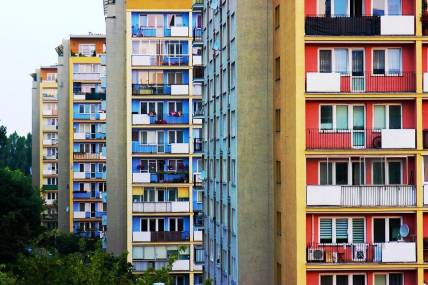

Specialists carry out all work in accordance with legal protocols and regulations.
Before the employees of the gas service start work on the repair, a planned check of each apartment will be carried out. It is on this basis that the conclusion is made that the apartment building needs replacement of gas pipes. The first thing to do to find out if a house is eligible for the renovation program is to go to the gas service website and find your address. If he is on the list, then in the near future we should expect a visit from repairmen.
No, it is not legal! If the owner of the apartment on the fourth floor has died, there may be his relatives (heirs), with whom the Criminal Code should contact and solve the problem. If there are no relatives, then there is another way out: invite interested neighbors, disinterested persons of at least two people, in the presence of everyone, open the apartment and make repairs.
07.08.they replaced the riser and resumed gas supply only from the first to the third floor, and there is no access to the apartment on the fourth floor due to the death of the owner. All apartments located above this riser have no gas supply to this day. I live on the 5th.
Risers, undoubtedly, belong to the common property, therefore replacement and repair of those are the responsibility of the management company and do not require any expenses from the pocket of the owner of the privatized housing. It should be remembered that on a free basis, only the repair of the riser itself is carried out to the point of its connection with the piping system inside the apartment. This equipment is already considered the property of the tenant, and its replacement occurs at the expense of the latter.
Conclusions and useful video on the topic
Video on how to properly connect and seal pipes:
What is the danger of connecting a column without observing fire regulations:
The video is a summary of the norms for installing a gas column with a detailed examination of the main points:
If it was decided to install a water heater in the apartment on our own, then it is necessary to do the installation in accordance with all the rules. It is strictly forbidden to save on installation materials. This is the case when it is better to play it safe and overpay. Otherwise, the consequences can be tragic. It is better to invite a specialist and make a payment once than to constantly pay fines from the gas service.
sovet-ingenera.com
What can and cannot be done with a gas water heater, gas supply to it and a ventilation system during repairs in the kitchen? This is one of the most relevant topics for our visitors. We publish detailed explanations of OJSC "MOSGAZ" on this issue.
Is it possible to transfer the riser gas pipe?
The riser pipe in a multi-storey building is not allowed to be moved. You can bypass all the authorities, from the operational office and gas facilities to the local architectural office, and not get permission from them. Most likely, one of the authorities, if not all, will not allow this to be done. And they will be right: it is too dangerous to perform such movements from the point of view of the integrity of the building. After all, gas is explosive, and many houses were calculated so that if the gas riser was damaged, the kitchen was ventilated as much as possible, and if there was a gas explosion, then so that the blast wave would extinguish the flame itself.
Another thing is when the riser pipe needs to be moved in a private house. Here permission is easier to achieve, and there will be less work and approvals. But in this situation, it is much easier to carry out the gas distribution after entering, that is, already behind the inlet valve.
If you need to carry out the transfer of the heating boiler, then it is better to coordinate such work with the designers of the house, since we are talking not only about gas communications, but also about water circuits and ventilation.
Alas, such work may also be needed. But for the most part - as emergency. If you have a depressurization of the squeegee coming from the riser, then there is nothing you can do about it: you have to weld it to the riser. How to do it:
- such work is performed only by specialists of the local gas industry;
- before welding, all residents of the entrance are notified of the gas cut-off on receipt;
- disconnect the riser;
- weld on a new squeegee;
- include the riser and conduct tests.
Why is it necessary to notify tenants against receipt? Because at the end of the work, the gas will turn on unexpectedly for them. But if they cook something on the stove, then even a short-term shutdown of the gas will lead to the flame going out. However, the valve on the stove will not be closed.
Not every stove is equipped with a gas control function, so it may turn out that gas will simply come out of the burner - poisonous and explosive. If the resident of the house is warned, then he will watch the stove and avoid a dangerous situation.
In the same way, you can insert another squeegee into the riser, if it will be so convenient to separate the gas pipes for different devices.
Why is it possible to weld on a riser pipe? Because the gas, closed by the valve, will be far from the welding place, and will not be able to heat up too much. The gas that remained in the riser can be released or burned out by the master before welding.
Any additional tie-in to the riser must be documented by the gas utility. You need to obtain permission for it from the management company and the gas industry. If the tie-in is not agreed, they can be fined for it and obliged to bring the gas distribution to its original state.
Any work with gas is a very responsible and serious action. It is important to remember this.
The kitchen is both a gastronomic workshop and a gathering place for the whole family, so it is important that this popular space is both functional and beautiful. Sometimes engineering networks interfere with the achievement of harmony: pipes spoil plans and destroy beauty. Is it realistic to transfer the gas pipe in the kitchen? Let's figure it out.






